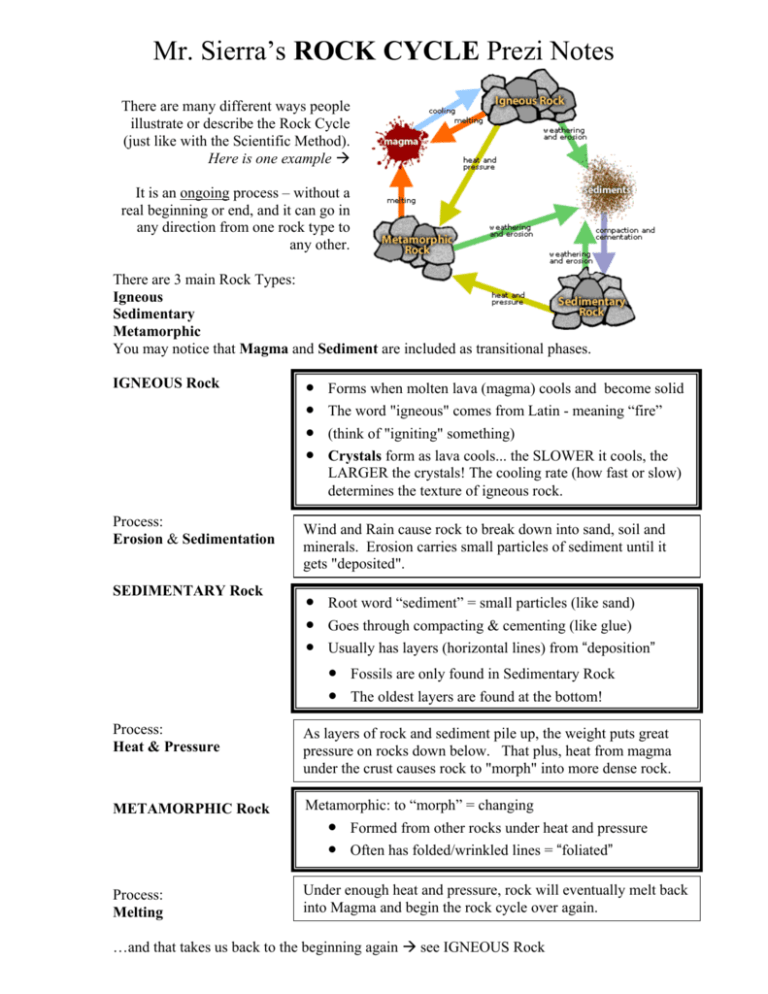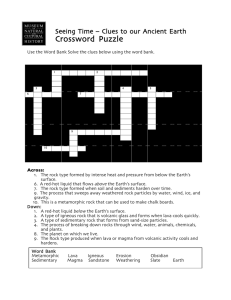Mr. Sierra's ROCK CYCLE Prezi Notes
advertisement

Mr. Sierra’s ROCK CYCLE Prezi Notes There are many different ways people illustrate or describe the Rock Cycle (just like with the Scientific Method). Here is one example Æ It is an ongoing process – without a real beginning or end, and it can go in any direction from one rock type to any other. There are 3 main Rock Types: Igneous Sedimentary Metamorphic You may notice that Magma and Sediment are included as transitional phases. IGNEOUS Rock Process: Erosion & Sedimentation SEDIMENTARY Rock ● ● ● ● Forms when molten lava (magma) cools and become solid The word "igneous" comes from Latin - meaning “fire” (think of "igniting" something) Crystals form as lava cools... the SLOWER it cools, the LARGER the crystals! The cooling rate (how fast or slow) determines the texture of igneous rock. Wind and Rain cause rock to break down into sand, soil and minerals. Erosion carries small particles of sediment until it gets "deposited". ● Root word “sediment” = small particles (like sand) ● Goes through compacting & cementing (like glue) ● Usually has layers (horizontal lines) from “deposition” ● Fossils are only found in Sedimentary Rock ● The oldest layers are found at the bottom! Process: Heat & Pressure As layers of rock and sediment pile up, the weight puts great pressure on rocks down below. That plus, heat from magma under the crust causes rock to "morph" into more dense rock. METAMORPHIC Rock Metamorphic: to “morph” = changing ● Formed from other rocks under heat and pressure ● Often has folded/wrinkled lines = “foliated” Process: Melting Under enough heat and pressure, rock will eventually melt back into Magma and begin the rock cycle over again. …and that takes us back to the beginning again Æ see IGNEOUS Rock







